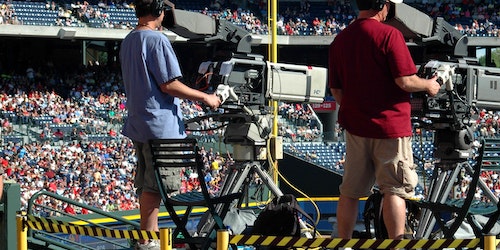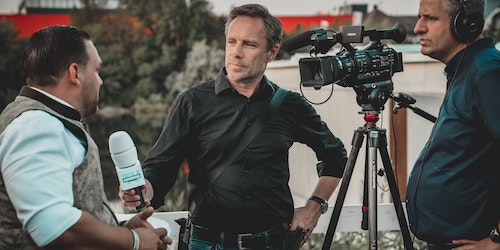Television Tech takes a gander at the innovations, mentalities and impacts influencing the course of detailing, creation and show
Executive Summary
TV news has a long history of developing — from the days when stories in the field were shot on film through electronic newsgathering to remote organization commitment of live and completed bundles. The equivalent could be said to describe newsroom innovations — from columnists on manual typewriters through a newsroom PC framework to PCs in the field associated by means of virtual confidential organizations (VPNs) to the newsroom framework. Every one of these news work process advances was continuous, giving writers and their news associations time to adjust and embrace that by and large was years long.
Notwithstanding, in Walk 2020 the Coronavirus pandemic was pronounced, leaving newsrooms, similar to the remainder of society, in a scramble to keep a level of predictability while the pandemic flooded and options in contrast to long-laid out schedules were sent. Numerous newsrooms sped up plans just viable before Coronavirus to a period of fast sending, for example, implanting writers all the more profoundly in their networks and diminishing their presence in the newsroom, or virtualizing normal news work processes in the cloud. In different occurrences, newsrooms went to new devices, for example, video conferencing applications, to supplant newsroom gatherings.
These progressions and others, nonetheless, don’t appear to be transitory — attached to some future all-unmistakable sign from a wellbeing authority. Rather, Coronavirus seems to have gone about as an impetus for a change in work processes contacting newsgathering, creation and show that will be felt for quite a long time into the future. This white paper analyzes how telecasters adjusted their news work processes to the new reality and what they realized in the process that will influence how they accumulate and deliver news later on. It additionally takes a gander at changing perspectives among news work force concerning innovations like the cloud, virtualized news creation devices, and long-held newsroom establishments, for example, the day to day publication arranging meeting.
Points examined include:
- Hyperlocal detailing
- Remote detailing and developing ranges of abilities
- The utilization of video conferencing applications for announcing and inside correspondences
- How telecasters adjusted existing advances and work processes for far off activities
- The advantages of the cloud, including overt repetitiveness and debacle recuperation
- Keeping up with cooperation during the time spent making news
The ends arrived at in this paper depend on interviews with news chiefs and corporate pioneers from eight transmission associations, including Al Arabiya, Graham Media, Dark TV, Meredith Corp., News-Press and Periodical Telecom, NBCU Telemundo, Sinclair Broadcast Gathering and TEGNA Media.
The COVID-19 Effect
The World Wellbeing Association proclaimed Coronavirus a pandemic in Walk 2020, provoking legislatures and society on the loose to take on systems to restrict its spread. Travel boycotts, social separating orders, lockdowns and occasion deferments and abrogations were carried out. TV telecasters, as well, answered the pandemic with moves toward limit openness and keep up with activities. Packed newsrooms specifically were helpless to the infection, due to the closeness of staff as well as in view of the gamble that correspondents and news picture takers in the field, who are presented day to day to a consistent stream of individuals, could get back to the station with the infection.
Further, the nearby limits of creation control rooms and the vicinity of anchors on a news set requested change. A typical procedure was to immediate whatever number staff as would be prudent to leave the station, work from a distance from home or somewhere else, and change the work examples of the people who stayed to decrease the probability of openness. “I think the underlying response of newsrooms, including mine, was, ‘Everyone, go!'” said Sway Ellis, VP and senior supervisor of Graham Media’s WJXT and WCWJ in Jacksonville, Fla. “For photographic artists, ‘All of you bring trucks back home.’ For journalists, ‘Don’t come to the station.’ We should get as couple of individuals in here as could be expected.”
For News-Press and Periodical, which claims 45 Telecom company associates, that implied moving 900 representatives, half in news, out of stations to work offsite, says Jim DeChant, NP&G head of Specialized Tasks. Also, NBCU Telemundo Center in Miami at first coordinated around 850 of its 1,200-man staff to remotely work. In news, 70% were expected to telecommute, says Jeff Mayzurk, the organization’s chief VP, Activities and Innovation. “Coronavirus certainly changed our work process with regards to creation,” said Ruba Ibrahim, head of activities, at Dubai-based Al Arabiya. “We needed to send a great deal of our staff to telecommute.”
Simply those expected to be actually present for live creation remained; the rest, remembering those working for bundles and narratives and media chiefs, were sent home to work. Ibrahim gauges toward the start of the pandemic three out of four Al Arabiya news staff telecommuted. While a sensational step, guiding staff to work somewhat in the underlying period of the pandemic likewise gotten rolling a significant reexamine and retooling of information cycles and work processes that guarantee to make an enduring imprint on how television news is accumulated, delivered and introduced.
For certain newsrooms, similar to those of Sinclair Broadcast Gathering’s news-creating stations, Coronavirus filled in as an impetus that sped up reception of arranged changes pointed toward working on the quality and becoming the quantity of reports delivered for live and computerized conveyance. “Coronavirus pushed us five years ahead in merely five weeks,” said Bill Anderson, Sinclair’s overseer of Progress The board — News. “It constrained change that was presumably inescapable and essential.” It requested change in how news is assembled, gatherings are directed, interviews done, stories altered and broadcasts delivered and secured, he said.
Changes In Attitude
To change basically every part of the TV news process is not easy at all. Not in the least did news the executives and designing groups need to lay out new work processes, yet lengthy held perspectives and establishments in the newsroom needed to change. For instance, the morning article meeting, a newsroom installation during which news the executives and writers lounge around a gathering table to set the course of the day’s inclusion, was presently not suitable when the general population was being coordinated to keep 6 feet of social separation.
In its place, the in-person gathering was supplanted with virtual reciprocals utilizing video conferencing applications like Zoom, Microsoft Groups and Slack. What was once a sacred piece of publication tasks changed in a moment and in the process uncovered where new work process efficiencies may be accomplished. “The publication meeting as a foundation is vital. In any case, I think for we who have been around the news game for some time, we comprehend that foundation once in a while could be a period killer,” said James Finch, chief, News Administrations at Dim TV.
Members currently arrive at these gatherings more ready to execute the newsgathering mission of the day than they did when they essentially lounged around a meeting table “throwing out thoughts that may not be feasible and fooling around,” he said. “That’s what my expectation is assuming we’ve found efficiencies in molding content for our crowd that we will remain with what we are doing as opposed to returning to something conventional in light of the fact that we’ve generally done it that way,” added Finch.



Leave a Reply